As March rolls into April, I look forward to getting
reacquainted with some famous individuals – even
if they are long dead. These people - plant collectors,
topographers and Civil War officers - all share
one thing in common: they are associated with these
desert plants that bloom in April.
Spectacle-pod (Dithyrea wislizenii) is a loose, lanky
member of the Mustard Family (Brassicaceae). The white,
four-petaled flowers are arranged in the shape of a
cross; hence, the old family name Cruciferae. Borne
in clusters, these flowers bloom in a ladderlike fashion,
with the youngest flowers found at the top. The older,
lower flowers that have already been pollinated will
form rounded seedpods approximately ½” long.
The pods are fused together along a midline to resemble
a pair of spectacles.
The generic name Dithyrea means “two shields” in
reference to these pods. The specific name wislizenii
honors Friedrich Adolph Wislizenus (1810-1889) a German
physician who immigrated to St. Louis in 1835. Wislizenus
embarked upon a self-funded expedition to collect flora
and fauna (mostly bugs and reptiles) in the Southwest.
He ended up in Mexico in 1846. Unfortunately, this
was the time of the Mexican-American War and Wislizenus
became a POW. Fortunately, his captors did not see
any harm in letting him collect plants around his prison.
You can read about his exploits in his Tour through
Northern Mexico for additional stories.
Fast forwarding to 1991, researchers from the USDA/ARS
Northern Regional Research Center in Illinois isolated
a sulfur-containing alkaloid, dithyreanitrile, from
spectacle-pod seeds. This compound inhibits the feeding
of fall armyworms and European corn borer larvae. Though
this plant has beneficial uses, it was one of his other
collections that is more noteworthy – the pinyon
pine. He collected that in New Mexico.
Augustus Wilhelm Fendler (1813-1883) was a Prussian
immigrant who landed in St. Louis around 1844. He gained
an acquaintance with the famous botanist Georg Engelmann,
who provided advice to the young German regarding plant
collecting. Fendler applied this advice while collecting
around St. Louis for Engelmann and Asa Gray. Eventually,
Engelmann loaned Fendler $100 so that Fendler could
travel to Santa Fe and collect plants enroute and in
the Southwest.
After two years, Fendler returned to St. Louis and
Gray named a shrub (and other plants) after Fendler.
Fendlerbush (Fendlera rupicola) is a many-branched
shrub that grows in rocky habitats (rupicola means “growing
on rock”). The reddish twigs turn gray with age.
Large white flowers grow singular or in small clusters;
their four petals are elliptical in shape with a narrow
base. The sharp woody capsules remain on the plant
even in winter, long after the seeds have been shaken
loose by the wind. Native peoples in the Southwest
used the hard, straight wood of the shrub for digging
sticks and arrow shafts.
Unfortunately, Fendler’s collecting career was
cut short. He embarked on a second expedition to the
Southwest in 1849, but lost all of his gear, including
his notebooks and specimens, in a flood. Upon returning
to St. Louis, a fire along the Mississippi River waterfront
had destroyed all of his possessions.
Disheartened, he left the United States for many years
and never collected again in the Southwest.
Whipple’s fishhook (Sclerocactus whipplei) honors
the West Point graduate, Amiel Wicks Whipple (1818-1863)
who served on several surveys in the East and West
as a member of the Army’s Topographical Engineers.
This stout, ovoid-shaped cactus has fishhook-shaped
spines and pinkish-purple flowers borne at the top.
Some specimens have straight spines or lighter colored
flowers.
In 1853, he led an expedition along the 35th parallel,
surveying to determine a practical railroad line to
connect the Mississippi River to the Pacific Ocean.
Later on, this route would include a rail line and
Highway 66. When the War Between the States broke out,
Whipple was reassigned as the North’s chief topographical
engineer. In 1863, Whipple was mortally wounded at
the battle of Chancellorsville. He died four days later
in Washington, D.C. shortly after President Lincoln
had promoted him to Major General.
Though these three men are long gone, their history
lives on through their association with these desert
plants. And each spring I look forward to getting reacquainted
with them.
|
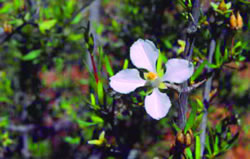
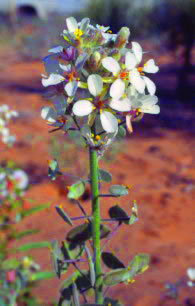
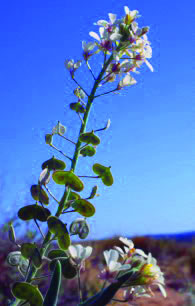
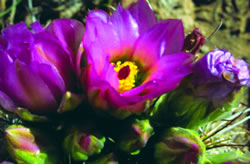
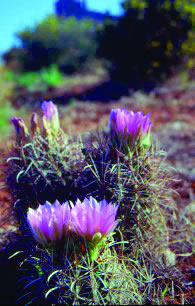
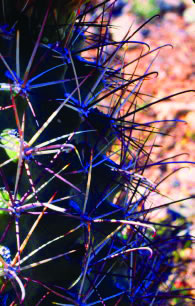
|